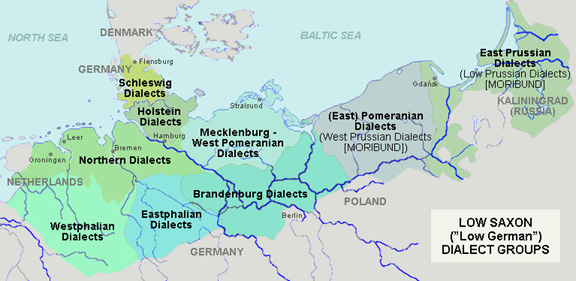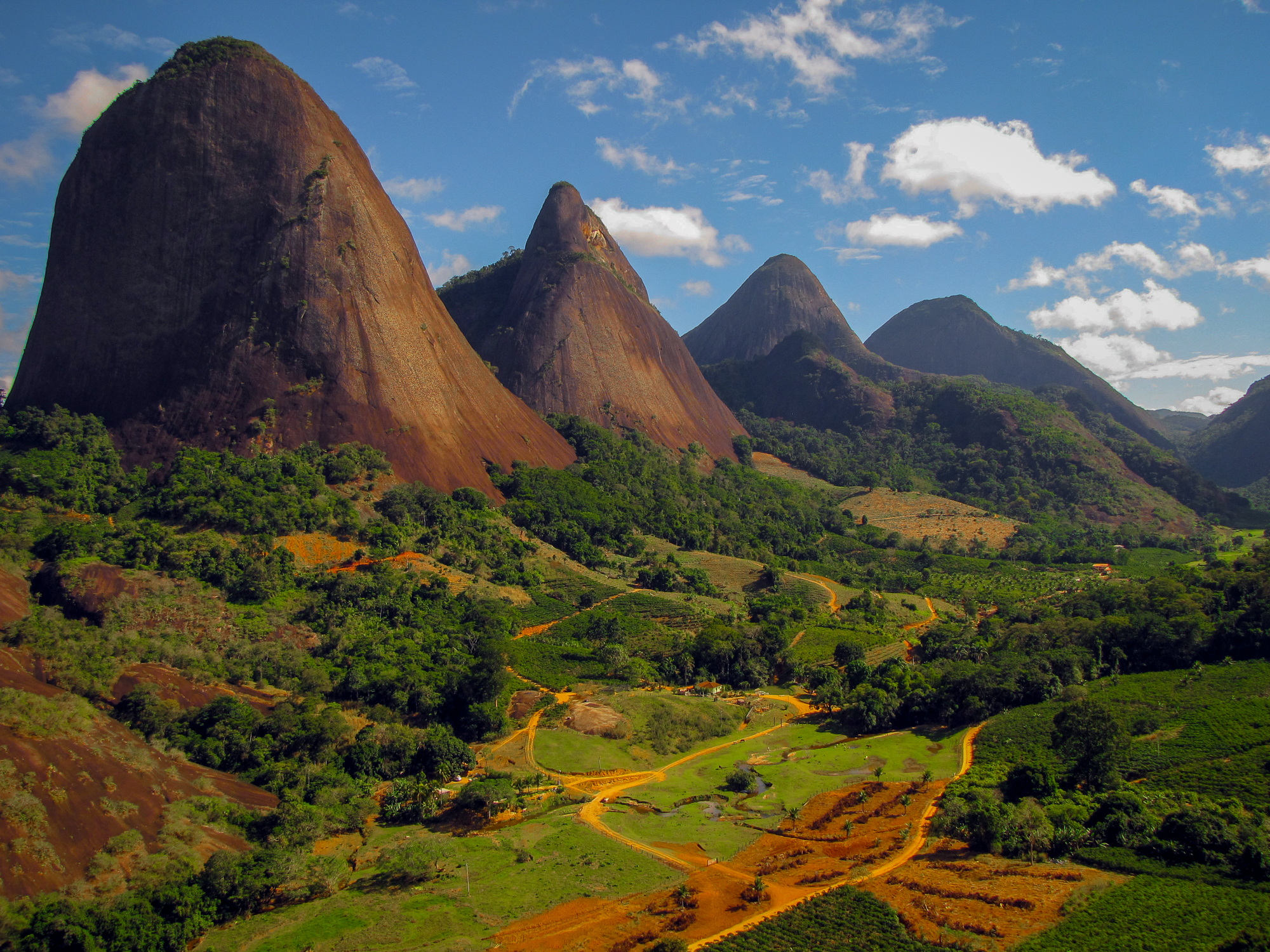|
Ostpommersch
East Pomeranian (''Ostpommersch'') is an East Low German dialect that is either moribund or used to be spoken in what was roughly Pomerania (now northwestern Poland; previously part of Germany until the end of World War II) and today is also spoken in some communities in Brazil. It is part of the Low German language. East Pomeranian was mostly spoken in the Farther Pomerania (''Hinterpommern'') region of the Prussian Province of Pomerania and in Pomerelia. After World War II, the region became part of Poland, and most of the East Pomeranian-speaking German inhabitants of the region were forcibly expelled to regions within the new borders of Germany. East Pomeranian is also spoken in the United States (central Wisconsin and parts of Iowa) and in some areas of Brazil, including Pomerode, Espírito Santo and Rondonia. The varieties of East Pomeranian are: * Westhinterpommersch * Osthinterpommersch * Bublitzisch around Bobolice * Pommerellisch Further the east, German dialect ... [...More Info...] [...Related Items...] OR: [Wikipedia] [Google] [Baidu] |
Low German Language
: : : : : (70,000) (30,000) (8,000) , familycolor = Indo-European , fam2 = Germanic , fam3 = West Germanic , fam4 = North Sea Germanic , ancestor = Old Saxon , ancestor2 = Middle Low German , dia1 = West Low German , dia2 = East Low German , iso2 = nds , iso3 = nds , iso3comment = (Dutch varieties and Westphalian have separate codes) , lingua = 52-ACB , map = Nds Spraakrebeet na1945.svg , mapcaption = Present day Low German language area in Europe. , glotto = lowg1239 , glottoname = Low German , notice = IPA Low German or Low Saxon (in the language itself: , and other names; german: Plattdeutsch, ) is a West Germanic language variety spoken mainly in Northern Germany and the northeastern part of the Netherlands. The dialect of Plautdietsch is also spoken in the Russian Mennonite diaspora worldwi ... [...More Info...] [...Related Items...] OR: [Wikipedia] [Google] [Baidu] |
Farther Pomerania
Farther Pomerania, Hinder Pomerania, Rear Pomerania or Eastern Pomerania (german: Hinterpommern, Ostpommern), is the part of Pomerania which comprised the eastern part of the Duchy and later Province of Pomerania. It stretched roughly from the Oder River in the West to Pomerelia in the East. Since 1945, Farther Pomerania has been part of Poland; the bulk of former Farther Pomerania is within the West Pomeranian Voivodeship, while its easternmost parts are within the Pomeranian Voivodeship. The Polish term ''Pomorze Zachodnie'' ("Western Pomerania") is colloquially used in contemporary Poland as a synonym for the West Pomeranian Voivodship whose borders do not match the historical ones; in Polish historical usage, it applied to all areas west of Pomerelia (i.e. to the entire narrow Pomerania). Farther Pomerania emerged as a subdivision of the Duchy of Pomerania in the partition of 1532, then known as ''Pomerania-Stettin'' and already including the historical regions Principality ... [...More Info...] [...Related Items...] OR: [Wikipedia] [Google] [Baidu] |
Low German
: : : : : (70,000) (30,000) (8,000) , familycolor = Indo-European , fam2 = Germanic , fam3 = West Germanic , fam4 = North Sea Germanic , ancestor = Old Saxon , ancestor2 = Middle Low German , dia1 = West Low German , dia2 = East Low German , iso2 = nds , iso3 = nds , iso3comment = (Dutch varieties and Westphalian have separate codes) , lingua = 52-ACB , map = Nds Spraakrebeet na1945.svg , mapcaption = Present day Low German language area in Europe. , glotto = lowg1239 , glottoname = Low German , notice = IPA Low German or Low Saxon (in the language itself: , and other names; german: Plattdeutsch, ) is a West Germanic language variety spoken mainly in Northern Germany and the northeastern part of the Netherlands. The dialect of Plautdietsch is also spoken in the Russian Mennonite diaspora worldwi ... [...More Info...] [...Related Items...] OR: [Wikipedia] [Google] [Baidu] |
Afonso Cláudio, Espírito Santo
Afonso Cláudio is a municipality in east central Espírito Santo, Brazil, founded in 1963. The town, at a height of 610m above sea level, has a population of approximately 30,455 and an area of 361.7 km2, and a population density of 32,53 inhabitants/km2. Its borders include: (E) Domingos Martins, Santa Maria de Jetibá and Itarana (N) Laranja da Terra and the neighbouring state of Minas Gerais, (W) Brejetuba (S) Conceição do Castelo and Venda Nova do Imigrante. History Afonso Cláudio first began to be populated in 1885, when Valentim Perozzini, an Italian immigrant, moved there. Now that place is called São Luis de Miranda. The mainly Italian immigration which took place in this area was indirect, in that people usually first came from the neighbouring localities of Alfredo Chaves, Castelo and Itaguaçu. The name of the municipality was given in honour of Afonso Cláudio de Freitas Rosa (born in Santa Leopoldina, Espírito Santo Santa Leopoldina is a municipality in ce ... [...More Info...] [...Related Items...] OR: [Wikipedia] [Google] [Baidu] |
Domingos Martins
Domingos Martins is the name of a municipality in the Brazilian state of Espírito Santo. According to the IBGE, the municipality had 33,986 inhabitants. It has a population density of 25.9 inhabitants/km2. Geography Domingos Martins is approximately 60 km west of the state capital, Vitória, and is 542 meters above sea level. Bordering municipalities include Castelo, Venda Nova do Imigrante and Afonso Claudio to the west, Santa Maria de Jetiba and Santa Leopoldina to the north, Cariacica and Viana to the east, and Guarapari, Marechal Floriano, Alfredo Chaves and Vargem Alta to the south. The municipality itself is again subdivided into 5 districts (''distritos''): Capital (''Sede'' in Portuguese), Aracê, Santa Isabel, Parajú and Melgaço. The total area occupied by the municipality is 1,225.327 km2. It is in the mountainous region of the state and is marketed as the "Green City", since it is surrounded by subtropical rainforest, much of which has disappeared ... [...More Info...] [...Related Items...] OR: [Wikipedia] [Google] [Baidu] |
Itarana
Itarana is a municipality located in the Brazilian state of Espírito Santo. Its population was 10,494 (2020) and its area is 296 km².IBGE The Brazilian Institute of Geography and Statistics ( pt, Instituto Brasileiro de Geografia e Estatística; IBGE) is the agency responsible for official collection of statistical, geographic, cartographic, geodetic and environmental information ... /ref> References Municipalities in Espírito Santo {{EspiritoSanto-geo-stub ... [...More Info...] [...Related Items...] OR: [Wikipedia] [Google] [Baidu] |
Laranja Da Terra
Laranja da Terra is a municipality located in the Brazilian state of Espírito Santo. Its population was 10,933 (2020) and its area is 458 km². East Pomeranian, a dialect of Low German : : : : : (70,000) (30,000) (8,000) , familycolor = Indo-European , fam2 = Germanic , fam3 = West Germanic , fam4 = North Sea Germanic , ancestor = Old Saxon , ancestor2 = Middle L ..., has co-official status in Laranja da Terra. References Municipalities in Espírito Santo {{EspiritoSanto-geo-stub ... [...More Info...] [...Related Items...] OR: [Wikipedia] [Google] [Baidu] |
Pancas
Pancas is a Brazilian municipality in the state of Espírito Santo. Its population was 23,306 (2020) and its area is 838 km². East Pomeranian, a dialect of Low German, has co-official status in Pancas. It is situated on a tributary of the Doce River, in the northwest of the state. Locally it is known as a good spot for paragliding. The landscape around the town is distinguished by large numbers of granite inselbergs, and Pedra Agulha ("Needle Rock") near the town is the second highest "chaminé" (high, vertical-sided granite rock) in Brazil - the highest being the famous Corcovado in Rio de Janeiro. History Before the European colonizers arrived, the area was inhabited by Amerindians. The first European settlers founded a village called São Silvano, but that was destroyed by the local Amerindians. The first permanent residents arrived in 1918 looking for valuable minerals, but the region of the Doce River was practically uninhabited till 1925, it was then that the f ... [...More Info...] [...Related Items...] OR: [Wikipedia] [Google] [Baidu] |
Germanic Languages
The Germanic languages are a branch of the Indo-European language family spoken natively by a population of about 515 million people mainly in Europe, North America, Oceania and Southern Africa. The most widely spoken Germanic language, English, is also the world's most widely spoken language with an estimated 2 billion speakers. All Germanic languages are derived from Proto-Germanic, spoken in Iron Age Scandinavia. The West Germanic languages include the three most widely spoken Germanic languages: English with around 360–400 million native speakers; German language, German, with over 100 million native speakers; and Dutch language, Dutch, with 24 million native speakers. Other West Germanic languages include Afrikaans, an offshoot of Dutch, with over 7.1 million native speakers; Low German, considered a separate collection of Standard language, unstandardized dialects, with roughly 4.35–7.15 million native speakers and probably 6.7–10 million people who can understand ... [...More Info...] [...Related Items...] OR: [Wikipedia] [Google] [Baidu] |
Bobolice
Bobolice (; formerly german: Bublitz) is a town in northwest Poland, part of Koszalin County, West Pomeranian Voivodeship. As of December 2021, it has a population of 3,896. Notable residents * Paul Kleinschmidt (1883–1949), German painter and graphic artist * Hans-Jürgen Heise (1930-2013), German author and poet References External links Official website Jewish Community of Boboliceon Virtual Shtetl The Virtual Shtetl ( pl, Wirtualny Sztetl) is a bilingual Polish-English portal of the Museum of the History of Polish Jews in Warsaw, devoted to the Jewish history of Poland. History The Virtual Shtetl website was officially launched on June 1 ... Cities and towns in West Pomeranian Voivodeship Koszalin County {{Koszalin-geo-stub ... [...More Info...] [...Related Items...] OR: [Wikipedia] [Google] [Baidu] |
Santa Maria De Jetibá
Santa Maria de Jetibá is the name of a municipality and of its capital in central Espírito Santo, Southeastern Brazil. It was founded in 1857 by Pomeranian immigrants who arrived through the state capital Vitória by going up the river Santa Maria. Geography Located in the south-central mountain region of Espírito Santo, this municipality has an area of 735.55 square kilometers. The town of Santa Maria de Jetibá is 720 meters above sea level, and the highest point in the state is Garrafão Peak, at 1200 meters (3937 ft) above sea level. People With a total population of 41,015 (2020), Santa Maria de Jetibá is considered one of the last significant East Pomeranian-speaking communities in the world. Those immigrants ( Pomeranians), who came from the historical region Pomerania, now part of Germany and Poland where it is known as Pommern and Pomorze respectively. In Brazil, many Pomeranians also established communities in Santa Catarina (see Pomerode) and Rio Grande do ... [...More Info...] [...Related Items...] OR: [Wikipedia] [Google] [Baidu] |



